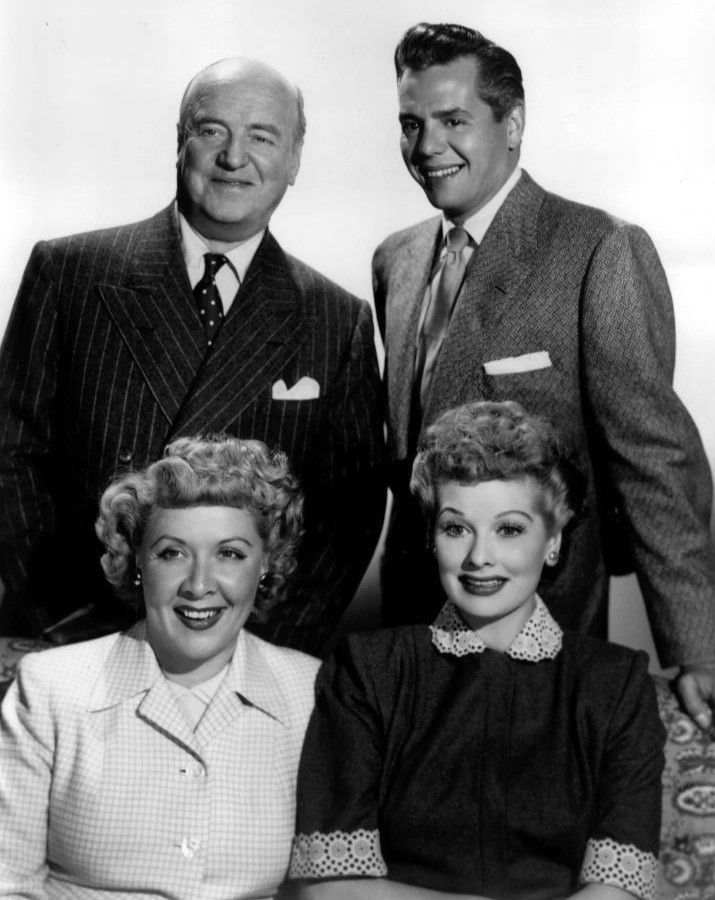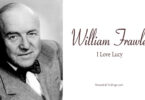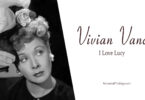Lucille “Lucy” Désirée Ball was born on August 6, 1911, in Jamestown, New York. Her father and mother were Henry Ball and Desiree Hunt. Her father was a telephone lineman whose job required the family to move around. When Lucille was three years old, and her mom was pregnant with her second child (Lucille’s brother, Fred), her father died of typhoid fever. Lucille later would say she didn’t remember much about the day her dad crossed to the other side, except that a bird got trapped in the house. Lucy had a phobia of birds for the rest of her life that she attributed to that unique event.
Desiree moved back to New York and in with her parents. Lucy’s maternal grandparents played a large role in raising Lucy and Fred during their early childhoods. Lucy always felt a deep connection to her maternal grandparents. When she was seven, her mom re-married, and she and Fred were sent to live with their new stepfather’s parents for a while. They were strict Puritans who only kept one mirror in the house. When they discovered young Lucy looking in it one day, they severely chastised her for being “vain.” This emotionally scarred young Lucy for much of the rest of her childhood.
When she was fourteen years old, Lucy was dating a twenty-one-year-old local hoodlum. Her mom did not approve of the relationship but discovered she could do nothing to influence Lucy away from the boy. After Lucy had been dating this boy for about a year, her mom, eager to get her daughter away from him, played upon Lucy’s by-then-well-known interest in performing by offering to use the family’s meager savings to send her to the John Murray Anderson School for the Dramatic Arts in New York City.
Lucy eagerly went. The famous actress Bette Davis was a schoolmate of hers there. Unfortunately, Lucy’s teachers at the school didn’t think she was likely to attain much success in the industry. This only made Lucy determined to prove them wrong. As history shows, she certainly did just that.
At the age of seventeen, she began working as a model for Hattie Carnegie. She modeled for a couple of years and was just starting to become known in the NYC entertainment industry when a bout of rheumatic fever sent her back home to Jamestown to recover. Unable to work for two years, she essentially had to start all over again when she moved back to NYC at the age of twenty-one.
Using the stage name Diane Belmont, Lucy appeared in mostly small, uncredited roles in B-movies at first. Later, as she gained more acting experience and became better known in the acting industry in New York City, she began to be offered lead roles in B movies and supporting roles in A movies. Eventually, she was offered a contract with RKO Pictures in Hollywood, California.
While working on movies in California, Lucille met Cuban band leader Desi Arnaz. The two fell in love and eloped together in 1940. They would go on to have children Lucie, born in 1951, and Desi Jr., born in 1953. They divorced in 1960. Lucille married comedian Gary Morton in 1961 and stayed married to him for the rest of her life.
In the late 1930s, Lucille began to gain attention for her work on radio and on stage. She was a regular on the popular radio program The Phil Baker Show, and she appeared on Broadway in a musical called Hey, Diddle Diddle. In 1940, she signed a contract with MGM and appeared in a number of films, including Du Barry Was a Lady and Best Foot Forward.
Despite her success in Hollywood, Lucille was unhappy with the roles she was being offered. She longed for the chance to show off her comedic talents, which had been honed over years of performing in vaudeville and on stage. In 1950, she was given that chance when she was cast in the lead role in the new CBS sitcom My Favorite Husband.
The show, which was created by Lucille’s actual husband, Desi, was a hit, and it allowed Lucille to showcase her comedic skills to a national audience. However, it was not until she was given a chance to develop her own show, I Love Lucy, that she truly became a household name.
I Love Lucy premiered on CBS in 1951, and it quickly became a cultural phenomenon. The show starred Lucille as Lucy Ricardo, a zany housewife who was always getting herself into hilarious predicaments. Desi Arnaz played her husband, Ricky, who was a Cuban bandleader. William Frawley and Vivian Vance played Lucy and Ricky’s landlords and best friends, Fred and Ethel Mertz. The casting was inspired, the chemistry between the actors was perfect, and I Love Lucy soon became a bona fide TV hit, one of the earliest true TV sitcom successes.
There was no doubt that people loved Lucy just as much as the characters on her TV show did. I Love Lucy remained one of the most popular shows on television throughout its six-year run. Lucille’s comedic timing, physical humor, and infectious laugh made her a beloved figure among audiences, and she was soon regarded, quite deservedly, as one of the greatest comic actresses of all time.

In addition to her work in front of the camera, Lucille was also a pioneer behind the scenes. She and Desi formed their own production company, Desilu Productions, which became one of the most successful production companies in the history of television. They were among the first to use the three-camera setup for filming sitcoms, which is now standard practice in the industry.
After I Love Lucy ended in 1957, Lucy continued to work in the entertainment industry that she so loved. She produced and starred in a Broadway musical called Wildcat in 1960, and stayed in the role until 1961. After that, she returned to TV with her I Love Lucy co-star and personal friend Vivian Vance in a sitcom called The Lucy Show. After this show ended in 1968, she jumped right back into TV with a new sitcom called Here’s Lucy, in which she co-starred with her real-life daughter and son, who also played her kids on the show. Here’s Lucy ran until 1974.
She played guest spots on other TV shows, acted in movies and Broadway shows, and had another short-lived self-titled TV sitcom, Life with Lucy, in 1986. After her divorce from Desi, she never played a married woman again in any of her personal projects. Her characters after I Love Lucy were always widowed.
In 1989, Lucy underwent surgery to fix an aortic dissection and to install an artificial heart valve. The surgery was a success. However, eight days after the operation, while still in the hospital recovering (which appeared to be going well), she experienced sharp pain in her back and later crossed to the other side of an abdominal aortic rupture, something that is far more common among smokers than the rest of the population. Lucy was a heavy smoker for most of her adult life. She was seventy-seven years old when she crossed.
Lucy was cremated, and her ashes were initially buried in the Forest Lawn Cemetery in Hollywood Hills, next to her mom. In 2002, both Lucy’s remains and her mom’s were moved to the Hunt family cemetery in Jamestown, New York (her mom’s family’s cemetery), per Lucy’s wishes to be buried beside her mom. After her brother Fred crossed in 2007, he was buried there with them.
Time Magazine later named Lucy as one of the One Hundred Most Important People of the Century (in referring to the twentieth century, at the time the list was published).
Today, The Lucille Ball Desi Arnaz Museum and Center for Comedy is located in Lucy’s hometown of Jamestown, New York. The town’s Little Theater is now renamed the Lucille Ball Little Theater. The street she was born on is renamed Lucy Street. Most importantly of all, episodes of I Love Lucy, as well as all the other shows she performed in, whether her own or someone else’s, are still available for the world to enjoy.




